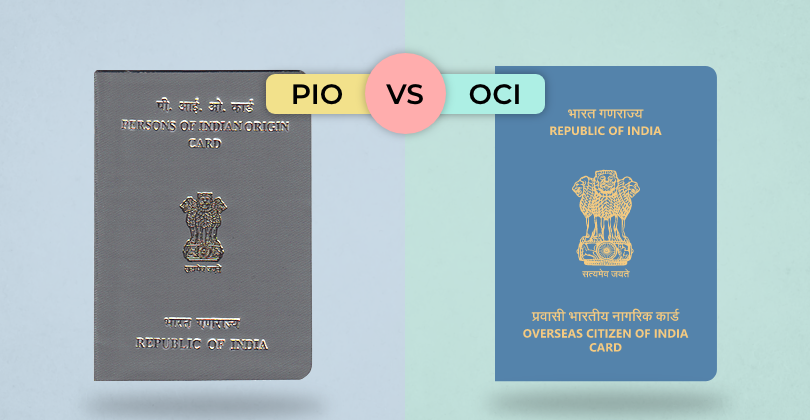Are you of Indian origin and living abroad? You've probably come across terms like PIO and OCI. These cards offer different benefits, but it can
Top-up loans offer individuals flexible financing options to meet a variety of financial needs. A top-up loan is a financial instrument that allows individuals to borrow extra money on an existing loan, typically a home loan.
This article explores what a top-up loan is, the eligibility criteria, and the process of obtaining a top-up loan in India.
📗 Related reading- What Are The Mistakes To Avoid While Taking An Instant Loan?
Understanding the Top-up Loan
A top-up loan is a supplementary loan that can be availed by individuals who already have an existing loan, such as a home loan. The primary advantage of a top-up loan is that it provides additional funds without the need for extensive documentation and a lengthy approval process. These loans are often used for purposes like home renovation, education, medical expenses, or any other personal financial requirement.
Key Features of a Top-up Loan
-
Linked to an existing loan: A top-up loan is typically linked to an existing loan, such as a home loan. The eligibility for a top-up loan is influenced by the borrower's repayment track record on the existing loan.
-
Lower interest rates: Top-up loans generally come with lower interest rates compared to personal loans. Since the borrower already has a relationship with the lender through the existing loan, the lender perceives the risk to be lower, resulting in more favourable interest rates.
-
Flexible end-use: Unlike the primary loan, which may be earmarked for a specific purpose like buying a house, a top-up loan offers flexibility in terms of end-use. Borrowers can utilise the funds for a variety of purposes, making it a versatile financial tool.
Eligibility Criteria for a Top-up Loan
While the specific eligibility criteria for a top-up loan may vary between lenders, certain common factors typically influence approval. Here are some key aspects that lenders consider:
-
Existing loan repayment track record: One of the primary factors that lenders assess is the borrower's repayment track record on the existing loan. A consistent and timely repayment history enhances the chances of approval for a top-up loan.
-
Loan-to-value ratio: Lenders often consider the loan-to-value ratio, which is the ratio of the outstanding loan amount to the current market value of the property. A lower loan-to-value ratio increases the likelihood of approval for a top-up loan.
-
Credit score: A good credit score is a crucial factor in determining eligibility for a top-up loan. A higher credit score reflects a borrower's creditworthiness and can lead to more favourable terms and conditions.
-
Stable income: Lenders may assess the borrower's income stability to ensure their ability to repay the additional loan amount. A steady income stream is a positive factor in the approval process.
The Process of Obtaining a Top-up Loan in India
To acquire a top-up loan in India, borrowers must follow a specific process. Here's a step-by-step guide to help individuals navigate the top-up loan application process:
-
Check eligibility: Before applying for a top-up loan, it is crucial to assess eligibility based on the lender's criteria. This involves reviewing the repayment track record, credit score, and other factors specified by the lender.
-
Documentation: Compile the necessary documents required for the top-up loan application. This may include income proof, bank statements, property documents, and details related to the existing loan.
-
Application submission: Submit the top-up loan application to the lender. This can often be done online through the lender's website or by visiting the nearest branch. Ensure that all required documents are attached to facilitate the smooth processing of the application.
-
Verification process: The lender will initiate a verification process, which may include a thorough examination of the submitted documents and an assessment of the borrower's creditworthiness. This step is crucial in determining the approval of the top-up loan.
-
Loan approval and disbursal: Once the verification process is complete and the application is approved, the lender will disburse the top-up loan amount. This can be credited to the borrower's account or issued through a demand draft, depending on the lender's policies.
-
Repayment terms: Understand the repayment terms associated with the top-up loan. These terms will include the interest rate, tenure, and monthly instalment amount. It is essential to be aware of these details to ensure timely repayments.
Tips for Responsible Borrowing
Before securing a top-up loan, consider these tips for responsible borrowing. Evaluate your financial situation, assess the necessity of the loan, and ensure that you can comfortably meet the repayment terms. Responsible borrowing not only aids in financial stability but also enhances your creditworthiness for the future.
Conclusion
A top-up loan serves as a valuable financial tool for individuals in need of additional funds for various purposes. Whether it is renovating a home, funding education, or meeting unexpected medical expenses, a top-up loan offers a convenient and accessible solution.
Understanding the eligibility criteria and following the step-by-step process for obtaining a top-up loan in India can empower individuals to make informed financial decisions and fulfil their diverse financial needs. As with any financial commitment, it is crucial to carefully assess one's financial situation and choose a reputable lender who offers favourable terms for a top-up loan.
AUTHOR
KreditBee As a market leader in the Fintech industry, we strive to bring you the best information to help you manage finances better. These blogs aim to make complicated monetary matters a whole lot simpler.







